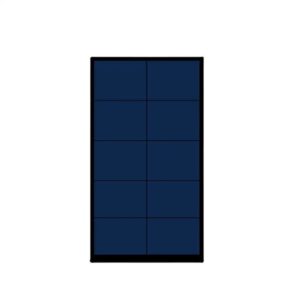The original intention of IBC (Interdigitated Back Contact) cells was that the solar industry laid different solar cell technologies for achieving higher power solar panels, trying to reduce power loss, improve efficiency, and reduce the production cost of photovoltaic (PV) modules.
The PN junction of common single crystal polycrystalline solar cell is distributed on the front and back respectively, and there are grid lines on the front, which affects the overall area of power generation. The back of IBC solar cell adopts optimized metal grid wire electrode, which reduces the series resistance. Usually, the front surface is made of SiNx/SiOx bilayer film, which not only has the anti reflection effect, but also has a good passivation effect on the textured silicon surface. The front unshielded solar cell not only has high conversion efficiency, but also has the advantages of beautiful appearance.

The following are the overall advantages of solar panels:
01 Reduce losses through shadows
The IBC solar cell reorganization places the front metal contact on the back of the battery, eliminating the shadow caused by the bus. By doing so, IBC solar cells increase the effective absorption of photons, thereby reducing power loss and other benefits.
02 Increase power output per square meter
With the improvement of the efficiency of IBC solar cells, IBC solar panels can be manufactured without space between cells, thus further improving the power output per square meter of a single module. This makes IBC solar cell technology more attractive for applications with limited space.
03 Independent photoelectric optimization
Since the IBC solar cell repositions the metal contacts on the back, the optical and electrical optimization of the battery is decoupled, making each optimization completely independent of the other, making it easier for researchers to improve one or the other independently.
04 Reduce the series resistance
IBC solar cells can reduce the series resistance of traditional Al BSF cells by placing larger metal contacts on the back of the cells, and become a key factor in the application of CPV.
To learn more about solar panels, please contact us, the solar panel manufacturer – Huanqi Technology (Shenzhen) Co., Ltd.




